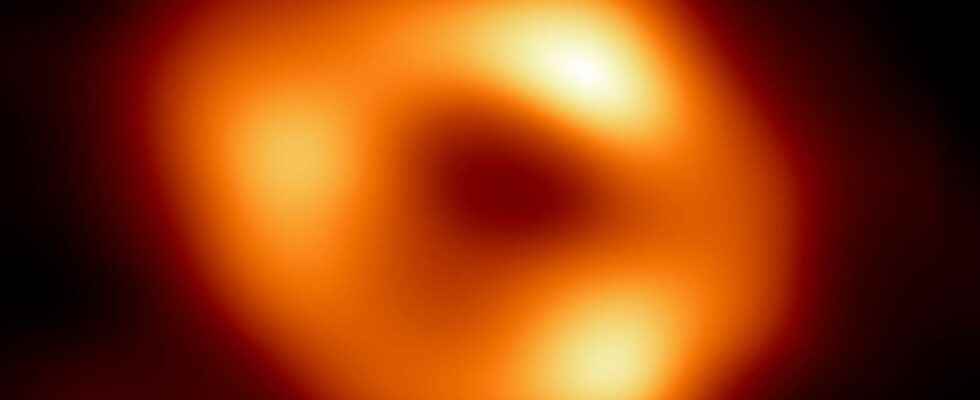It’s finally here: First-ever image of the Milky Way’s central black hole just revealed! After five years of calculations and thousands of images analyzed, the researchers finally succeeded in visualizing Sagittarius A*.
The epic of this technological feat began with an observation campaign in April 2017 by interferometry very long base, also called VLBI. This observation technique consists of the simultaneous use of many radio telescopes in the world, in order to create the equivalent of a gigantic interferometer the size of the Earth. By doing so, the resolution angular obtained which defines the smallest angular size that researchers are able to observe in detail, becomes so small that many normally invisible objects become visible.
This is the case with M87* and Sagittarius A*, two black holes whose apparent diameter is similar, and which require a resolution that the VLBI can reach. In effect, M87* is both much more massive and much further away than Sgr A*, with its 6.5 billion masses solar cells and its distance of 50 millionlight yearsso its diameter visible from Earth is equivalent to that of Sgr A*.
A total of eight radio telescopes were used simultaneously, located in Chile, United States, Mexico, Spain and Antarctic ! Since then, three more telescopes joined the teamEvent Horizon Telescope with, in particular, the Greenland Telescope located northwest of Greenland and the second observatory of IRAM Noema, located in the French Alps. This process requires a lot of preparation, because the synchronization must be perfect: radio telescopes have also used atomic clocks, which only develop a delay of 1 second every 10 million years. The only observation campaign by this method took place in 2017, more precisely from April 4 to 14, 2017. Then came the data analysis, and that’s where everything got complicated!
This phase is just as difficult as the first. In total, more than 350 people took part in this technological feat. Thus, in 2019, the very first image of M87* has been unveiled, but not that of Sagittarius A*, which the scientific community was also expecting.
The cause of the delay: the diameter of the black hole, too small!
As Sgr A* is much smaller, the matter of its accretion disk rotates much faster, at the frantic pace of one revolution in just 4 minutes 30! Thus, during the observation campaign, the researchers observed these variations in real time, so to speak, because the campaigns lasted several hours, several times a day, for almost two weeks.
” the gas near black holes moves at the same speed — almost as fast as light — around Sgr A* and M87*. But while it takes days, even weeks, to orbit around the large M87*, it only takes a few minutes to do so around the much smaller Sgr A*. This means that the brightness and the gas pattern around Sgr A* changed rapidly as the EHT collaboration observed it — much like trying to take a clear picture of a puppy chasing its tail “, explained in the CNRS press release Chi-kwan (“CK”) Chan, a researcher at the Steward Observatory, Department of Astronomy and Institute for Data Science at the University of Arizona, USA.
Many more means have therefore been implemented to obtain a stable image of Sgr A*, in particular a gigantic library of black hole simulations which has been compared with the real images. All these calculations also required what are called supercomputers which allow a computing power difficult to imagine, with tens of thousands of processors.
” These rapid changes in luminosity and configuration around Sgr A* generate a much more complex dataset than that of M87*, so we had to develop new tools digital simulation and analysis of movement gases to generate a sharp imagesaid Frédéric Gueth, CNRS researcher and deputy director of the Institute of Millimetric Radio Astronomy (Iram). Which explains why it took us three more years to visualize Sgr A*. »
Interested in what you just read?
